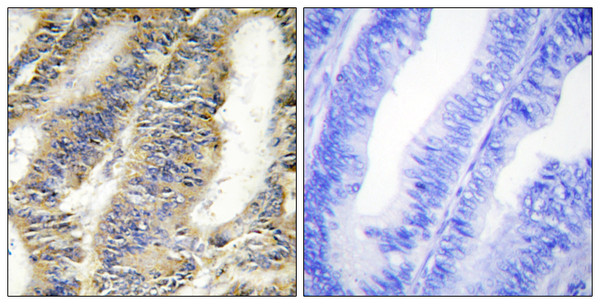| Function | Cytokine that binds to TNFRSF1A/TNFR1 and TNFRSF1B/TNFBR. It is mainly secreted by macrophages and can induce cell death of certain tumor cell lines. It is potent pyrogen causing fever by direct action or by stimulation of interleukin-1 secretion and is implicated in the induction of cachexia, Under certain conditions it can stimulate cell proliferation and induce cell differentiation. Impairs regulatory T-cells (Treg) function in individuals with rheumatoid arthritis via FOXP3 dephosphorylation. Up-regulates the expression of protein phosphatase 1 (PP1), which dephosphorylates the key 'Ser-418' residue of FOXP3, thereby inactivating FOXP3 and rendering Treg cells functionally defective. Key mediator of cell death in the anticancer action of BCG-stimulated neutrophils in combination with DIABLO/SMAC mimetic in the RT4v6 bladder cancer cell line. Induces insulin resistance in adipocytes via inhibition of insulin-induced IRS1 tyrosine phosphorylation and insulin-induced glucose uptake. Induces GKAP42 protein degradation in adipocytes which is partially responsible for TNF-induced insulin resistance. Plays a role in angiogenesis by inducing VEGF production synergistically with IL1B and IL6. Promotes osteoclastogenesis and therefore mediates bone resorption. The TNF intracellular domain (ICD) form induces IL12 production in dendritic cells. |
| Protein Name | Tumor Necrosis FactorCachectinTnf-AlphaTumor Necrosis Factor Ligand Superfamily Member 2Tnf-A Cleaved Into - Tumor Necrosis Factor - Membrane FormN-Terminal FragmentNtf - Intracellular Domain 1Icd1 - Intracellular Domain 2Icd2 - C-Domain 1 - C-Domain 2 - Tumor Necrosis Factor - Soluble Form |
| Database Links | Reactome: R-HSA-381340Reactome: R-HSA-5357786Reactome: R-HSA-5357905Reactome: R-HSA-5357956Reactome: R-HSA-5626978Reactome: R-HSA-5668541Reactome: R-HSA-6783783Reactome: R-HSA-6785807Reactome: R-HSA-75893 |
| Cellular Localisation | Cell MembraneSingle-Pass Type Ii Membrane ProteinTumor Necrosis FactorMembrane Form: MembraneSoluble Form: SecretedC-Domain 1: SecretedC-Domain 2: Secreted |
| Alternative Antibody Names | Anti-Tumor Necrosis Factor antibodyAnti-Cachectin antibodyAnti-Tnf-Alpha antibodyAnti-Tumor Necrosis Factor Ligand Superfamily Member 2 antibodyAnti-Tnf-A Cleaved Into - Tumor Necrosis Factor - Membrane Form antibodyAnti-N-Terminal Fragment antibodyAnti-Ntf - Intracellular Domain 1 antibodyAnti-Icd1 - Intracellular Domain 2 antibodyAnti-Icd2 - C-Domain 1 - C-Domain 2 - Tumor Necrosis Factor - Soluble Form antibodyAnti-TNF antibodyAnti-TNFA antibodyAnti-TNFSF2 antibody |
Information sourced from Uniprot.org
















